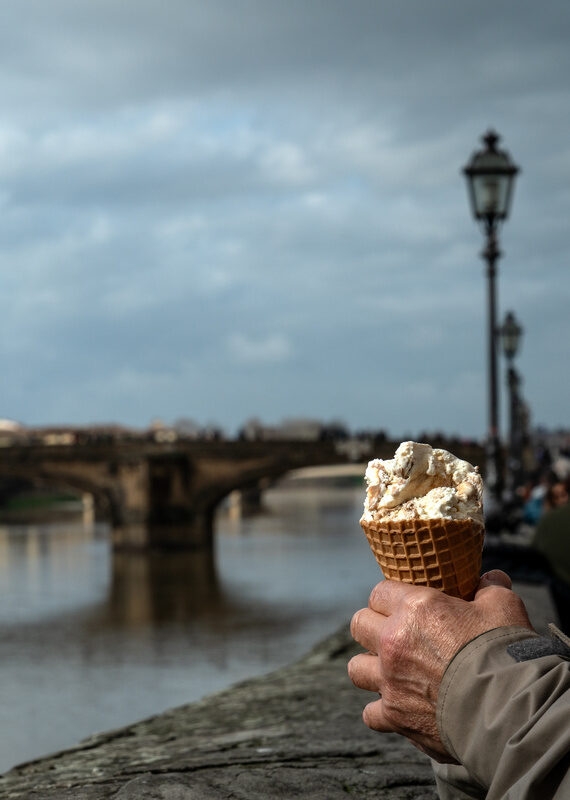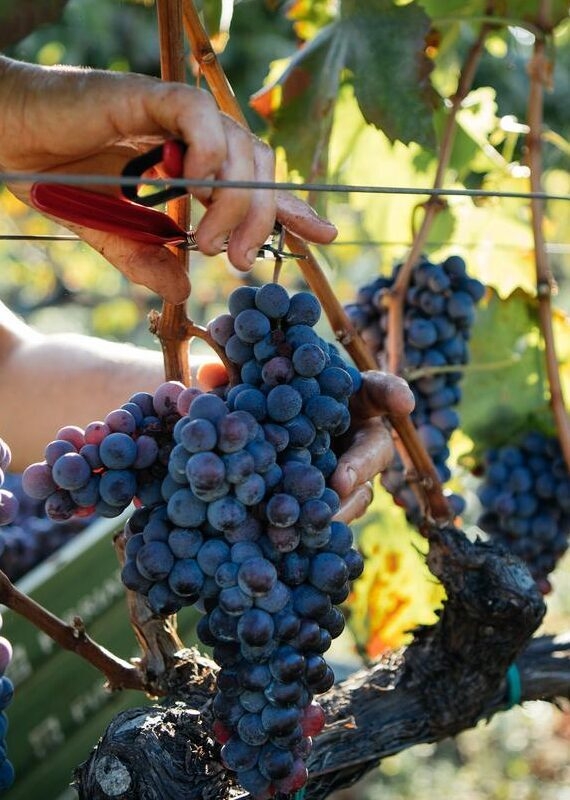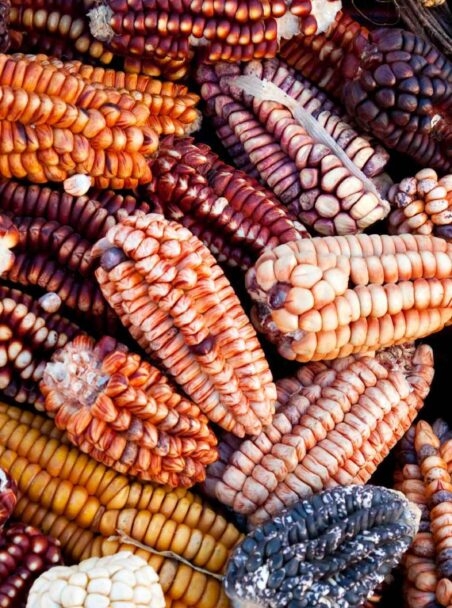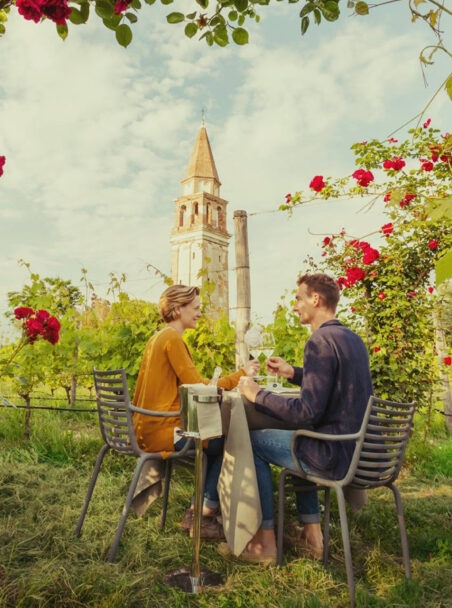Italy boasts one of the world’s most beloved cuisines. It’s the home of pizza, pasta, mozzarella, limoncello, gelato and endless other delicacies. And while Italy’s traditional food can now be found all over the globe, there’s no better way to enjoy it than by going straight to the source on a food and wine tour.
Beyond the world-famous foods that originated in Italy, there are also plenty of lesser-known local specialties and regional recipes. Eating your way through Italy means paying close attention to where you are and what’s in season – after all, this is the birthplace of the Slow Food movement.
Enjoying authentic Italian cuisine could mean tasting pesto in Liguria, risotto in Venice, arancini in Sicily, porchetta in Rome… and the list goes on. To help you make sense of it all, here’s our ultimate culinary guide to Italy, including essential ingredients, street food, sweet treats, quintessential drinks and of course an overview of the most traditional Italian dishes.

The essential ingredients in Italian cooking
Although the essential ingredients of Italian cuisine are wonderfully simple, they come together to create complex flavours and inimitable dishes. Perhaps the most basic is olive oil: a longstanding staple in Italy and throughout the Mediterranean. Its bold counterpart, balsamic vinegar, hails from Modena in the northern part of the country.
Herbs and spices are central to Italian cooking; basil, oregano and garlic define the flavour profile of many classic recipes. Fresh produce also plays a starring role, with tomatoes, aubergines, artichokes, mushrooms and lemons often taking centre stage. Olives and capers bring a tangy kick, while pine nuts and almonds add a rich nuttiness to other dishes.
When it comes to carbohydrates, pasta and bread reign supreme. Each of these is an entire category in and of itself, running the gamut from trofie to ravioli and from focaccia to ciabatta. The most common type of flour in Italian pasta is semolina, made from durum wheat. In certain regions, rice, polenta and gnocchi are incredibly popular too.

Next up is Italian cheese, which could fill an article (or several) all by itself. Italy is one of the world’s top cheese producers, with literally hundreds of varieties on offer. There’s Parmigiano Reggiano from Emilia-Romagna, Gorgonzola from Lombardy, burrata from Puglia, mozzarella di búfala from Campania and so many more. If you love cheese, Italy is a dream come true.
As for protein, expect everything from plant-based sources such as fava beans and chickpeas to seafood, pork and beef. Cured meats are common, with varieties like prosciutto di Parma, mortadella and nduja adding a salty – and sometimes spicy – element to sandwiches, pizzas and more.
When in Rome
Days exploring the wonders of the eternal city are bound to leave you hungry, and what better way to refuel than by making (and eating) one of Italy’s most iconic dishes? This private workshop led by an experienced chef immerses you in the art of authentic Italian pizza–making. From kneading the dough to selecting and preparing the toppings, it’s a hands–on experience every step of the way, ending with savouring your mouth–watering creation fresh from the oven.
Delve deeper
Speak to Luisa, our Italy expert, about your own foodie adventures around Rome, and learn her recommendations for other irresistible experiences.

Traditional Italian dishes
It would be impossible to cover all of the traditional Italian dishes you’re likely to encounter throughout the country in just one article – let alone a single section, so we’ll focus on just a few of the most authentic specialties.
One could say that pizza and pasta are the national dishes in Italy, and these broad labels include endless variations. Different regions have their own pizza styles, from soft-crusted Neapolitan pies to Rome’s rectangular by-the-slice version, while Italian pasta includes a seemingly infinite array of shapes and formats, plus every kind of sauce under the sun.
In northern Italy, risotto is the local favourite. Each town and city has its particular recipe, which may include meat, seafood or vegetables – especially mushrooms. Risotto gets its creamy texture from the process of slowly cooking (and constantly stirring) arborio or carnaroli rice.
Rice is also the core ingredient of arancini, a traditional Italian dish from the island of Sicily. Cooked rice is combined with other ingredients, formed into a spherical or conical shape, breaded and fried until crispy. Although it’s often enjoyed as a snack, arancini can also be served as a first course.

Another classic first course is minestrone, which has gained global fame for its simplicity and flexible recipe. It traditionally includes vegetables, beans, pasta, tomatoes and often Parmesan cheese on top. It’s healthy, hearty and healing: kind of like an Italian (and vegetarian) version of homemade chicken soup.
After a first course of soup, pasta, polenta or risotto, it’s time for the second course, which commonly features meat or seafood. One of the most indulgent Italian meat dishes is ossobuco, or braised veal shank, which supposedly has its origins in Milan. It’s often accompanied by gremolata, a flavourful green sauce with fresh herbs, garlic and citrus zest.
This is far from an exhaustive list of traditional Italian dishes, but it should give you a starting point for your next food-focused adventure – and let’s be honest: it’s hard not to make food a integral part of any trip to Italy.

Italian street food, snacks and sweets
Italian lunches and dinners are famously lengthy and plentiful, but what about breakfast, dessert and everything in between? There are a fantastic selection of snacks and smaller indulgences to satisfy your sweet tooth or keep hunger at bay between meals.
The classic Italian breakfast food is a cornetto, usually enjoyed with coffee. It looks similar to a French croissant but has its own texture and flavour, partly because – unlike a croissant – it’s made with eggs. Cornetti are often filled with cream or jam for a sweetness that contrasts perfectly with a strong caffé.
As for savoury snacks, let’s start with focaccia. This flat, flavourful bread is made from flour, water, salt and olive oil. It’s a local specialty in Liguria, where you’ll find Portofino and Cinque Terre; look for street vendors selling glistening slices of it, either plain or stuffed with savoury toppings. You’ll probably also see farinata: a thin and crispy ‘pancake’ made from chickpea flour.
Another unique snack is polenta. Although this cornmeal-based concoction is often served as a side or base for main dishes, it can also be cooled, sliced and deep fried to create a crunchy and delicious result. In Puglia this is a popular street food known as sgagliozze. Farther south on the island of Sicily, arancini and panelle (chickpea fritters) dominate the street food scene.

Sicily is also home to one of the most famous Italian desserts: cannoli. The golden-brown, crispy pastry shell surrounds a filling of sweet ricotta cream. Other ingredients range from pistachios to chocolate chips, but the traditional topping is candied fruit (usually oranges or cherries).
Few Italian desserts can rival the ubiquity of cannoli, but tiramisu might be even more iconic. The combination of coffee-soaked ladyfinger biscuits, mascarpone, cocoa powder and just a touch of rum or liqueur makes this classic dessert nearly impossible not to love. The modern recipe is only a few decades old, but a similar treat dates back to 17th-century Tuscany.
Finally, the Italian sweet to rule them all: gelato. This may just be one of the country’s greatest creations (which is saying a lot). The frozen delicacy is denser and creamier than ice cream and comes in almost any flavour you can imagine – though the very first gelato was flavoured with orange, lemon and bergamot.
When in Bologna, I really recommend this foodie walking tour. It feels as if you are being shown around by a friend, with stops at a traditional cafeteria and a food market to source your cooking ingredients. The highlight for me was going back to our guide’s house, where she cooked us a regional pasta dish from scratch. We shared fantastic conversation over a glass of wine, and even though she was 74 years old, we connected over our shared love of food and have remained in touch. And that first bite of homemade tortellini, well, it was so good it brought tears to my eyes.

Melania Siriu
Senior Travel Designer

Italian coffee culture
The global influence of Italian coffee culture is unmatched. Just look at the menu of any artisanal coffee shop anywhere in the world, and you’ll see familiar words like espresso, macchiato and latte (which actually just means ‘milk’ in Italian)… all of which can be traced back to the unassuming bars where Italians have been tossing back this drink for centuries.
The most basic Italian coffee is known simply as caffé, which is a single shot of espresso that can be ordered as ristretto (with less water) or lungo (with more water) For two shots, ask for a doppio. Add even more water to get an americano, the closest thing you’ll find to American-style filter coffee in the average Italian bar.
If you’re ordering coffee after lunch or dinner (a common practice), it should always be one of the varieties above. In Italy, coffee with milk is usually only enjoyed in the morning, perhaps with a cornetto for a quick breakfast. That doesn’t mean you can’t have an afternoon cappuccino, of course – but if you want to do as the locals do, make it a simple caffé.
If you do want milk with your coffee, order a minimalistic macchiato (espresso with a bit of milk) or the iconic cappuccino (with foamed milk). There are also several other classic coffee drinks that are iced, sweetened or even bolstered by a bit of alcohol. If you want to experience the full breadth of Italian coffee culture, it’s worth trying them all.

Italian wine and spirits
When it comes to wine, Italy has its own sublime specialities scattered across the country. To help you explore each region’s delights, our experts can create a bespoke wine tasting tour to suit even the most discerning palate. In Lecce, Li Veli winery is a renowned family-run operation, and an incredible place to explore the history of wine in Puglia. You can enjoy a fascinating tour and tasting of beautiful wines here, before settling down for a spot of lunch.
In Verona, experience a traditional Italian vineyard in the Valpolicella wine region. This hilly, agricultural corner of Italy has been producing wine since the ancient Greeks were around. Recioto dessert wine and Amarone – each made from dried grapes – are both specialities in this region, along with several other light and fragrant styles. Sample them all while learning about the processes and techniques used in the production.
If you’re in need of something a little stronger, limoncello is Italy’s national liqueur. Wall paintings and mosaics uncovered in Pompeii and Herculaneum suggest that lemon trees have been cultivated in this region for millennia, and these distinctly flavoured fruits have become the symbol of Sorrento. While you’re in the area, embark on a private tour to discover how this traditional digestivo is made before enjoying a tasting.

A month-by-month guide to seasonal eating in Italy
Italy’s sun-soaked soil and Mediterranean climate offers a menu of tantalising seasonal produce all year round.
Spring (March–June) is synonymous with the green of new life, and this rings true with the delicious vegetables on offer. Leeks, artichokes and asparagus are all in their prime, ready to be savoured in a variety of dishes and preparation methods. Enjoy them in soups or risottos, or on their own, complemented with the finest olive oil and lemon juice.
Summer (June–September) is prime time for most fruits. Sweet, juicy melons are the star of the season, along with figs, berries and of course, Amalfi lemons. These refreshing flavours pair well with a creamy gelato to beat the heat. August is also the best time for tomatoes – that fundamental Italian ingredient. They bring their zingy flavour to everything from bruschetta to a simple caprese salad with fresh basil and creamy buffalo mozzarella.

The autumn (September–November) harvest in Italy yields a wide variety of delicious, earthy ingredients such as grapes, porcini mushrooms, chestnuts and truffles. One of the finest foods in the world, the peak truffle season runs from October to December, and their distinctive flavour can elevate simple pasta dishes into something exquisite.
Inject some sunshine into the winter (December–March) months with some vitamin C. Blood oranges from Sicily’s famous Conca d’Oro, considered by many to be the best in the world, are in their element at this time of year – as are clementines, mandarins, and standard oranges. These zesty treats are perfect as they are, or delicious in a freshly squeezed juice or citrus-y gelato.

Embracing the Italian culinary experience
Sometimes the best way to fully experience a country’s cuisine is by diving right in and making it yourself. Luckily Italy offers a stunning variety of cooking classes, market tours and interactive experiences that are specific to each region. We can help you find the perfect activity, whether you want to learn how to cook the classics, go truffle hunting or sample the best street food.
In the charming town of Ravello on the Amalfi Coast you can take a cooking class at Villa Maria restaurant, which has its own organic garden, and learn how to prepare a three-course Italian meal with a professional chef. In Rome you can visit the Campo de’ Fiori food market to search for seasonal produce and artisanal products alongside an expert guide.
We can arrange similar experiences in Tuscany, Salento, Catania and pretty much anywhere else in the country. Learn how to make pesto in Liguria, pasta in Bologna, gelato in Florence, burrata in Puglia, bread in Altamura or pizza in Rome – the options are truly endless.

If you’d rather let the experts do their thing and simply sample the best food that Italy has to offer, there are also plenty of Italian food tours and tasting experiences. You can set out on a walking food tour of Parma, enjoy a picnic and olive oil tasting in Puglia, sip on local wines in Piedmont, take a street food tour of Rome or sample the sweetest specialties of Venice.
Every day in Italy you can indulge in some of the world’s best food. From your first bite of a morning cornetto to that final spoonful of tiramisu, we suggest savouring every bit of Italy’s culinary culture. If you want to learn more about a particular dish or dive into the history, traditions and little-known secrets of Italian food, our travel designers are here to help.
Whatever your want from your foodie adventure in Italy, our travel designers are ready to help:
Luxury accommodation in Italy
Trip inspiration
Our travel guides



















